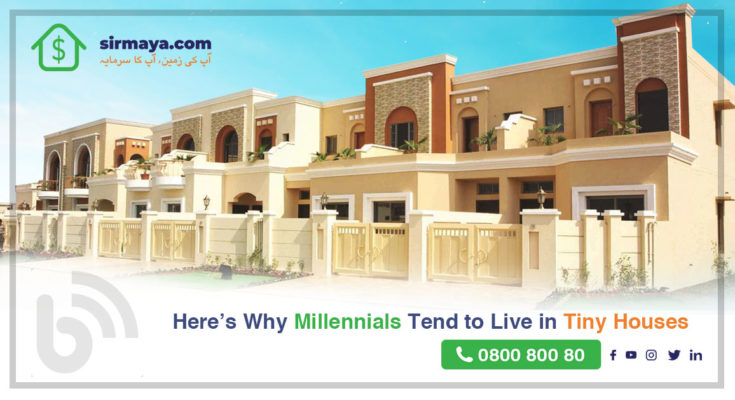When it comes to purchasing a home, millennials prefer smaller and more affordable apartments overbooking more expensive and grand luxurious bungalows. Tiny houses are a symbol of the fundamental differences between millennials and baby boomers. Millennials prefer quality and comfort oversize and instead like spending money on experiences like traveling around the world. Developers are now taking advantage of this trend by shrinking average apartment sizes to make them more affordable for a millennial buyer.
Research shows that developers are now starting to downsize apartments to gain buyers’ attraction. They’re targeting millennials, especially the affordable housing category because they prefer to buy smaller apartments that fit their budget. Millennials prefer small but affordable apartments in well-connected and central neighborhoods. This is because millennials are staggering in debt, coupled with the rising cost of living, which is delaying the savings of millennials for a down payment.
Millennial-worthy
Average apartment sizes have declined in most cities over the past five years. This can be attributed to changing demand, especially from millennial homebuyers, for affordable homes in the center of the city as compared to the large apartments in far-flung areas.
Real estate prices are commensurate with square feet, and, logically, smaller apartment sizes will reduce the burden on the pockets of home buyers. This isn’t always an easy equation because prices rise as the area becomes more centralized.
Smaller sized apartment permits buyers to buy apartments in areas that may not be available to them because of higher prices. Many millennials want to ditch add-ons such as balconies so they can buy starter homes in decent locations that they can later sell to upgrade to larger homes as purchasing power rises.
When it comes to millennial purchasers, developers also benefit from flexibility. Millennials place a lot of emphasis on on-site sustainability rather than “attachment” to the surrounding area as previous generations did. Frequent city switching is fast becoming the new normal for millennials looking for faster job growth. This means that they prefer to buy in smaller units, which are easier to sell than lock in larger units.
What Steps to Take?
It will take the market time to show if this experiment is going to work or not, and either people will respond positively to this contraction. But for a family with four members, an apartment of 300-400 square feet would not be feasible. Affordability is on the rise, but the question is whether builders are pushing it, forcing buyers to forgo size. Small one-bedroom apartments may be suitable for singles and dual-income couples but having no children. However, it must not be a pigeonhole either because livability is one of the necessary aspects.
The inevitable demand for apartments in the main central areas means compact houses are not going anywhere. But while the affordable and small home may be a good idea for those on a budget, when buying a home, you need to contemplate factors such as space requirement or comfort, along with the resale potential and value if you are going to upgrade later. Keep in mind that your family and your need for space will increase over time.





